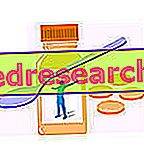Related articles: Stroke of the Witch
Definition
The witch's blow is a violent muscle contraction that causes acute pain in the lumbar region.
Usually, the disorder depends on a trauma caused by excessive effort, a fast bend, an exaggerated and sudden torsion of the trunk, perhaps after having maintained the same incorrect posture for prolonged times. One of the most risky situations is to bend down to pick up an object that has fallen to the ground.
Some incorrect habits, such as a sedentary lifestyle, play an important role in the appearance of the problem, as they predispose to a low elasticity of the lumbar paravertebral musculature. Even sitting at your desk or standing on your heels for many hours, maintaining a fixed position, causes an overload of the back and intervertebral discs, increasing the risk of incurring the blow of the witch.
The factors that can predispose to the disorder also include excessive body weight, flawed postural attitudes and other traumatic events, such as falls or accidents. The blow of the witch can also be favored by scoliosis, alterations of the intervertebral discs, spondylolisthesis (that is the sliding of one vertebra on the other) and arthrosis of the vertebral column.
Most common symptoms and signs *
- Muscle pains
- Sore legs
- Hypoaesthesia
- weakness
- Backache
- Paresthesia
- Joint stiffness
- Sciatica
Further indications
The blow of the witch appears as a sudden episode of acute low back pain after a sudden and abnormal movement of the spine. Pain is located mainly in the lower back: the patient experiences a sensation comparable to a very intense pain, which tends to radiate from the lumbar or sacral spine towards the buttock or thigh.
The pain is generally associated with a reflex contracture of the lumbar musculature around the vertebrae (paravertebral), which involves a limitation of the ability to move and a rigidity of the area. In practice, the person who experiences the witch's stroke remains "stuck" in the position in which he felt the contracture (ie with his back bent forward) and has difficulty in performing even the most trivial movements, such as returning to an upright position.

In the most severe forms there may also appear tingling and loss of sensitivity or strength in the leg muscles due to the inflammation of one or more nerve roots.
When a stroke of the witch occurs, a specialist medical examination and any diagnostic tests (radiographic investigations, magnetic resonance imaging or computerized tomography) must be carried out to ascertain the real conditions of the structures involved. In any case, when symptoms appear, it is important not to force the back: trying to get up immediately to counter the contracture could cause further injuries, both muscular and osteoarticular. If the problem depends on simple acute low back pain, the discomfort tends to resolve spontaneously within 10 days. To alleviate the symptoms, it is good to allow yourself at least a couple of days of rest, but without maintaining a position too long. After this period it is necessary to start moving again, even just walking or doing some stretching exercises.
In order to allow the affected person to return to their activities, following an accurate assessment of the case, the doctor can prescribe a therapy based on non-steroidal anti-inflammatory drugs (eg ibuprofen), analgesics (eg paracetamol) and muscle relaxants . Subsequently, after the acute phase, decontracting massages performed by expert staff can be helpful, as well as specific rehabilitation exercises able to strengthen the back muscles.



